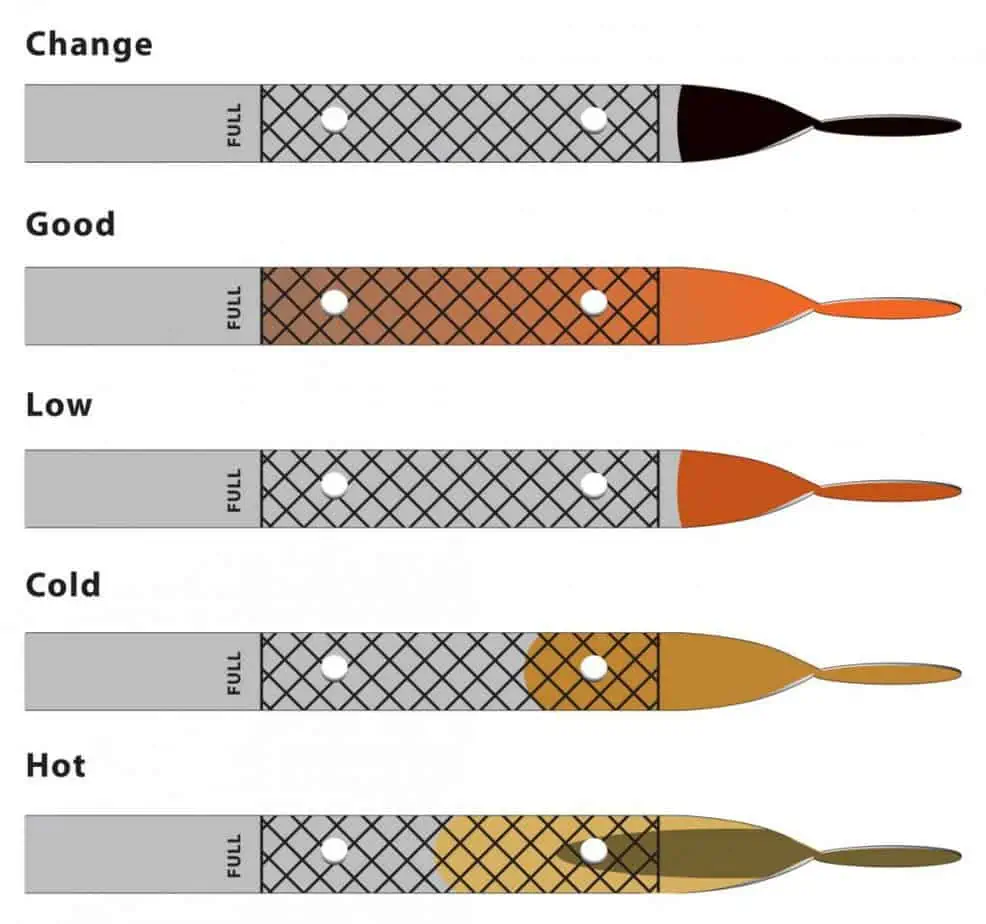Welcome to the fascinating world of engine oil! You might think that oil is simply a dark, viscous liquid that keeps your engine running smoothly․ However, the colour of engine oil can tell you a lot about its condition and the health of your vehicle․ In this complete guide, we’ll explore the nuances of oil change colour, what it signifies, and how to interpret it for better vehicle maintenance․
Understanding Engine Oil
Before we dive into the colours, let’s understand what engine oil does․ Engine oil lubricates moving parts, reduces friction, prevents wear, and helps keep the engine cool․ It also collects impurities, which can affect its colour over time․
The Spectrum of Engine Oil Colours
Engine oil can display a range of colours, each with its own set of implications:
- Clear or Amber: Fresh oil is typically a clear amber colour․ This indicates that the oil is new and has not yet absorbed significant impurities․
- Dark Brown: As oil ages, it turns dark brown․ This is normal and signifies that the oil is doing its job by capturing dirt and contaminants․
- Black: While many may panic at the sight of black oil, it is often just a sign of heavy usage․ However, if it becomes black too quickly, it might be time for a change․
- Milky or Creamy: If your oil looks milky or creamy, it could indicate coolant contamination, which is a sign of a serious issue like a blown head gasket․
- Yellow or Green: If you see yellow or green oil, it may be a sign of excessive moisture or contamination․ This can be due to condensation or a more significant problem․
- Red: Some automatic transmission fluids are red, but if you see red in your engine oil, it could indicate a serious leak from the transmission․
When to Change Your Oil
Changing your oil is not just about mileage; it’s also about the oil’s condition․ Here are some signs that you may need to change your oil:
- Dark Colour: If your oil has turned dark brown or black after just a few hundred miles, it’s time for a change․
- Unusual Textures: If the oil feels gritty or has particles floating in it, that’s a red flag․
- Burnt Smell: A burnt smell often indicates that the oil has broken down and needs replacing․
- Engine Performance Issues: If your vehicle is struggling to start or you hear knocking sounds, old oil could be the culprit․
How to Check Oil Colour
Checking your oil is a straightforward process that can save you a lot of hassle in the long run:
- Park on Level Ground: Ensure your vehicle is on level ground to get an accurate reading․
- Turn Off the Engine: Let the engine cool down for a few minutes․
- Locate the Dipstick: Open the hood and find the dipstick (usually marked with a bright handle)․
- Pull and Wipe: Pull the dipstick out and wipe it clean with a cloth․
- Reinsert and Remove: Put it back in, then pull it out again to check the oil level and colour․
Maintenance Tips for Optimal Oil Health
To maintain your engine oil in its best condition, consider the following tips:
- Regular Checks: Check your oil level and colour regularly, at least once a month․
- Stick to Scheduled Changes: Follow your manufacturer’s recommended oil change intervals․
- Use Quality Oil: Invest in high-quality oil and filters to ensure better performance․
- Monitor Driving Conditions: If you often drive in stop-and-go traffic or extreme conditions, you might need more frequent oil changes․
- Watch for Leaks: Regularly inspect for leaks that could contaminate your oil․
Understanding the colour of your engine oil is vital for maintaining your vehicle’s health․ By paying attention to oil colour changes, you can catch potential problems before they escalate․ So, next time you check your oil, take a moment to appreciate its hue—it’s more than just a shade; it’s a window into your engine’s heart!
Remember, regular maintenance is key to prolonging the life of your vehicle․ Whether you’re a seasoned gearhead or a casual driver, knowing your oil can save you time, money, and trouble down the road․
Happy driving!

